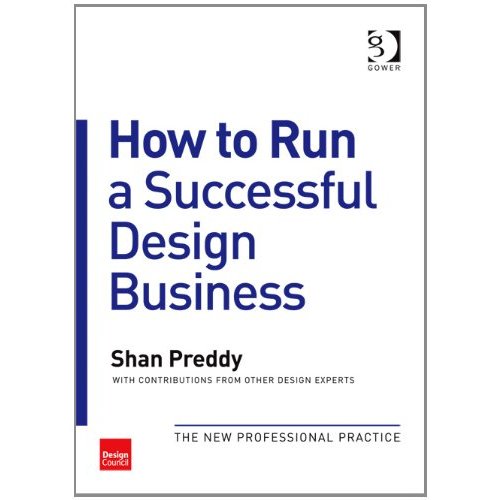Great expectations (and how to manage them)
Frustration comes from expectation. Remove the expectation, you remove the frustration.” – Sister Shelby Hellbound
I’ve been thinking a lot about expectations lately. Not the real, tangible, obvious ones (a client asks me to create a logo for them, I agree, therefore they have an expectation that that’s what I’ll do), but more the sort of hopes-and-dreams-and-pie-in-the-sky-stories we all tell ourselves, and how they can impact on business relationships. A couple of books I’ve had my nose stuck in this week have helped me explore this thorny ground and expose how clear, honest communication from the start is the best solution: one is How to Run a Successful Design Business edited by Shan Preddy; the other is The Surprising Purpose of Anger by Marshall B Rosenberg PhD.
I’ll start with the latter. Rosenberg, founder of the Center for Nonviolent Communication (oh dear, they use Comic Sans in their logo, way to go to make me feel peaceful there), posits that anger is a warning signal: when properly made conscious it is possible to realise that the trigger of and the reason for your anger are separate things – and that the reason for it is always your own judgmental thoughts about the trigger situation. Anger’s warning is an indication that in some way your needs are not being met.
Let’s take an entirely hypothetical situation.
My boyfriend is late meeting me at the cinema and we only just catch the start of the film. This triggers my anger. The reason for my anger is that I have enduring negative thoughts around his lateness being a lack of respect for our time together, and of how much I wanted to see this film and that he was bound to let me down again, and also a general frustration at his lack of ability to get his shit together. Thus, I have insecurities about how much he values the relationship and my unmet need requires him to convince me that he takes the relationship seriously. (Thinking all of this through in the heat of the moment might be difficult, though). In this scenario I need to manage my own expectations (he is always late – relax about it) and communicate to him how his lateness triggers my insecurities – which he could then choose to address.
So what do my entirely hypothetical relationship problems have in common with graphic design, hmmm?
 Well, on to Shan Preddy’s book. It is a massive and invaluable resource and every designer and agency should buy it as you will bloody learn something. It’s divided up into lots of little essays by various experts about different aspects of the business. The bit I am reading now is about project management – setting up a process, taking things step-by-step, allowing contingencies, etc. All common sense stuff.
Well, on to Shan Preddy’s book. It is a massive and invaluable resource and every designer and agency should buy it as you will bloody learn something. It’s divided up into lots of little essays by various experts about different aspects of the business. The bit I am reading now is about project management – setting up a process, taking things step-by-step, allowing contingencies, etc. All common sense stuff.
The part that struck me was this: that client and agency expectations for the project should be made clear from the start.
What does this mean?
The client will have expectations – often unspoken – about the agency. They will have made their choice to use the agency based on a myriad of things – the marketing, the initial meeting, the price, the pitch, the mood they’re in, the weather, whatever. So it’s a good idea that I, the agency, ask them about their expectation. Get them down on paper. Make sure that all parties are 100% aware of the job remits and the required outcomes.
I might also have expectations and assumptions – that the client knows what they’re doing and how to work with me on every step of our journey. So, importantly, I should list my own requirements, too: A clear, coherent brief. Honest and timely communication. Prompt payment.
Managing expectations – getting them out of the realm of foggy wishes and ineffable feelings and down on paper – enables both parties to know where they stand and enables everyone’s needs to be met, thus avoiding frustration and even anger. Yep, there’s still room for feelings and intuition and creative design, but obligations on all sides are clearer, allowing for a more secure relationship and providing a solid grounding for the magic to happen.
Plagues of vagueness
I learned this lesson recently with a client who wouldn’t write me a brief, (despite downloading a copy of this) and then became increasingly frustrated with me as I continued to miss the mark. Shan Preddy’s book has some invaluable advice for this sort of situation. What it suggests the designer do in this case is to offer to write your own brief from your client’s woolly instructions, and send it to them for their agreement before proceeding. It also cleverly suggests that you tell them you are charging extra for this service. A reasonable client will realise that their vagueness is giving you a tonne of extra work, and either get their head out of the clouds to construct a brief, or agree to pay you to commit their ramblings to paper-form.
An unreasonable client will cry holy hell – and you can walk away, without having wasted too much time.
I wrote a guide (you may have heard me mention it) to help design-buying newbies write briefs. People say it’s helped them understand how designers work and what we need from clients, but I’ll be going further and firming up my communications to ensure that I and my clients have as much chance as possible of living happily ever after.
